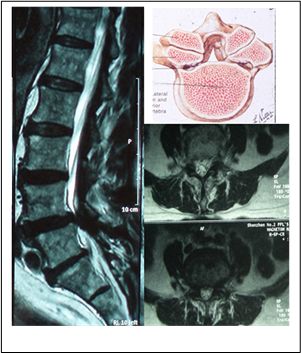Spinal stenosis refers to narrowing of the spinal canal, most commonly seen in the lumbar region. It results in symptoms of neurogenic claudication, with or without back pain, neurological deficit, and disability. It typically presents in patients in their mid-fifties, and progresses in the next decade of life.
The symptoms of spinal stenosis can mimic other conditions. Vascular disease may present with similar claudication symptoms. Myelopathy can cause similar gait dysfunction, associated with bowel and bladder dysfunction but may also have symptoms and signs from a higher neurological level. Degeneration of the other joints may mimic, or co-exist with stenosis symptoms. Peripheral neuropathy can cause lower limb numbness, which is typically "glove and stocking" in nature, and can be differentiated by electromyography and nerve conduction velocity studies.

Treatment of Spinal stenosis
Conservative treatment with analgesics and a course of physiotherapy should be tried, aiming at posture correction and endurance training of the spinal muscle.
Operation would aim for decompression of the compressed nervous structure at the stenotic area. All symptomatic levels should be decompressed. Fusion surgery with or without instrumentation may have to be considered if there is an element of segmental instability, like in cases of spondylolisthesis, where the stability may be further compromised by the decompressive procedure.